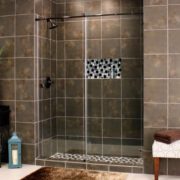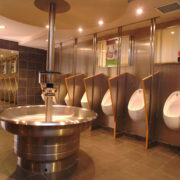The Problem Builders Face:
The range of measures that affect a building’s energy performance are found in every system and assembly in the building. Much of the time these are unknown to the homebuyer. Decisions of how to weight each measure, which are cost-effective, which have impacts on other systems, can be migraine inducing but can effect occupant health and safety and building durability. What would be great is if there was a professional who is focused on these systems and interactions. Happy day – there is!
What are Home Energy Raters?
Home Energy Raters are accredited through a national governing body (RESNET) whose authority comes from the US Department of Energy. HERS Raters, as they are called, perform energy simulation analysis using software that must pass muster against DOE tests. The Raters follow established protocols for gathering information and modeling buildings and perform on-site verification of air leakage and duct leakage rates using blower door testing equipment. Cornerstone’s raters also perform infrared imaging.
Energy Star/Builder Tax Credit
HERS Raters are also the primary mechanism for qualifying home for the US Environmental Protection Agency’s Energy Star for Homes program and the 2005 Energy Policy Act Tax Credit.
Raters are closely aligned with building scientists as well and they are the network that takes much of what is learned in the building science community and helps put the knowledge to work in the field.
What is a Home Energy Rating?
A Home Energy Rating is a scoring system that helps a consumer compare homes of different makeup based on their energy loads.
What is done to determine the Rating?
The HERS rater will examine the attic insulation. The rater will inspect prior to drywall for insulation defects.
Blower door and duct leakage testing are required. The blower door not only shows how and where air leaks occur, but can determine what level of air tightness is best to keep the indoor environment healthy. Duct leakage is the most common energy defect.
By looking for the EPA’s Energy Star label, the homebuyer will be assured of a level of performance above the minimum efficiency rating.
Consulting with the rater up front will allow the builder/architect to assess what-ifs to find corrections for common problems. If the designer has command of pricing, the consulting exercise can result in improvements that add little or no up-front cost to the building.







